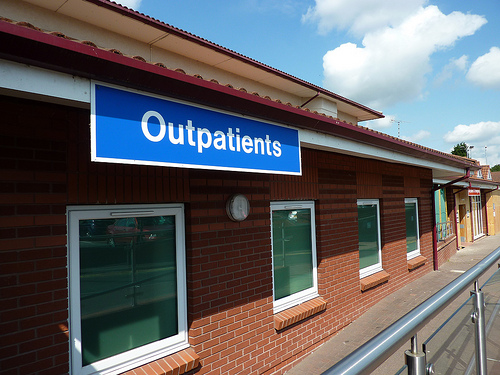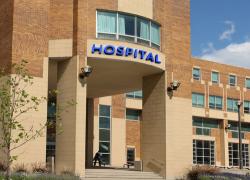 On July 14, 2014, the CMS released its Proposed Hospital Outpatient Prospective Payment System (OPPS) schedule for out-patient departments, ambulatory surgery centers (ASCs) and the Medicare Physician Fee Schedule (PFS).
On July 14, 2014, the CMS released its Proposed Hospital Outpatient Prospective Payment System (OPPS) schedule for out-patient departments, ambulatory surgery centers (ASCs) and the Medicare Physician Fee Schedule (PFS).
 On July 14, 2014, the CMS released its Proposed Hospital Outpatient Prospective Payment System (OPPS) schedule for out-patient departments, ambulatory surgery centers (ASCs) and the Medicare Physician Fee Schedule (PFS). Hospital out-patient procedures cover services like imaging services, emergency department services and out-patient procedures and surgeries.
On July 14, 2014, the CMS released its Proposed Hospital Outpatient Prospective Payment System (OPPS) schedule for out-patient departments, ambulatory surgery centers (ASCs) and the Medicare Physician Fee Schedule (PFS). Hospital out-patient procedures cover services like imaging services, emergency department services and out-patient procedures and surgeries.
Medicare’s ASC category describes specific surgical procedures designated by CMS to not pose a significant safety risk when performed in an ASC. Generally, ASCs do not require active medical monitoring or an overnight stay.
The proposal recommends an average increase of 2.1% over the current payment level. The plan also includes an increase of $5.2 billion, up to $56.5 billion, payment for beneficiary cost-sharing and an adjustment for changes in enrollment, utilization and case-mix.
Here are the key points to know about how the proposed changes will affect physician medical billing:
CMS switching to a more comprehensive payment system
More than 4,000 facilities–general acute care hospitals, inpatient rehabilitation facilities, inpatient psychiatric facilities, long-term acute care hospitals, children’s hospitals, and cancer hospitals as well as 5,300 Medicare-certified ASCs, received payments paid under the OPPS, according to the CMS.
The payment amount depends on the Ambulatory Payment Classification (APC) category that the procedure or service is assigned. CMS plans to revise the current OPPS from a hybrid model and fee schedule into a system that has a more complete range of out-patient prospective payments.
Market basket index to increase
The market basket index incorporates wages and prices for a blend of goods and services. It contains the most common groupings of hospital inpatient and operating costs, which includes physician medical billing.
The CMS forecasts a 2.7% increase for the market basket, minus 0.2 percent as required by law and a 0.4 percent adjustment, leaving the index 2.1% higher in the 2015 calendar year.
Adjustment to the ASC annual update
Each year, the CMS adjusts ASC payments to reflect the percentage increase in the Consumer Price Index for all consumers (CPI-U). CPI-U represents the most commonly used statistic for identifying inflation or deflation in the US economy. The CPI update will increase 1.7 percent. The multifactor productivity adjustment will be 0.5 percent for 2015, which is a 1.2 percent MFP-adjusted CPI-U update for calendar year 2015.
Transparency and more Input into payment rate
The Medicare Physician Fee Schedule changes call for increased transparency for payment rates and to allow more public input into the process for setting the rates. In 2016 the proposed payment changes will have a notice and comment period before adoption.
Here are some other important takeaways from the proposed hospital OPPS payment schedule:
Sets the hospital outlier threshold to trigger when the facility cost of furnishing a service surpasses 1.75 times the Ambulatory Payment Classification (APC) payment amount and exceeds the APC payment amount by $3,100.
Confirms the policy for implementing 28 comprehensive APCs – proposed and finalized in 2014 – for calendar year 2015.
Conditionally packages services in ancillary service APCs with costs estimated at $100 or less.
Changes that will modify the criteria for “topped out” Hospital Quality Reporting measures or measures that have near universal compliance. Proposals to remove, add, and make reporting voluntary for some other quality measures.
Adopting a system for recovery of Medicare Advantage and Part D overpayments that occurs as a result of inaccurate and inconsistent payment data by Part D sponsors or an MA organization. It would also create an appeals process for MA or Part D plans.
Photo: lydia_shiningbrightly via photopin cc![]()







